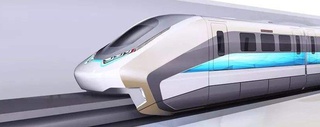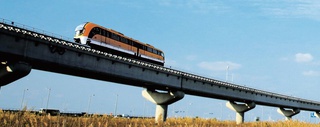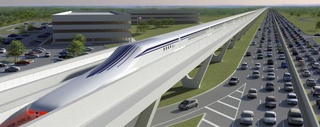Answering Google Search Questions
If you look up "Maglev is..." on Google, it's going to autofill the most popular questions that people have submitted into the search engine. So it would be just logical to answer the most commonly asked questions related to magnetic levitation. So here we go.
Maglev Is The Direct Application Of...
- Magnetically levitated trains
- Maglev wind turbines
- Magnetic bearings
- Maglev elevators
- Maglev fans (ventilation)
- Magnetically levitated toys, gadgets, decorations

Maglev Is Bullet Train
The literal meaning of the Japanese Shinkansen is "new trunk line"; however, in English, it's translated as the bullet train. It is a high-speed network line in Japan, and it's considered one of the best in the world. Five Japan Railways Group companies operate the Shinkansen lines. The Chūō Shinkansen maglev line will be run by JR Central once it's inaugurated in 2027. So the answer is, maglev can be a bullet train, but only if it is referred to as the ones operating in Japan.

Maglev Is Short For
Maglev is a combination of two words—Mag as magnetic and Lev as levitation. The two merged is simply MagLev.

Maglev Is The Future
We cannot disagree with this statement. Read our article about the benefits of maglev technology to see why this could indeed be the future of transportation.

Maglev Is Energy-Efficient
Maglev trains are very energy-efficient at high speeds. At comparable speeds with conventional HSR systems, the energy consumption is on the same level. Maglev is more energy-efficient at speeds that conventional high-speed rail trains are not allowed to travel.

Is Maglev Expensive?
The upfront cost of maglev is higher than of conventional rail due to the unique infrastructure. It's estimated to cost about twice as much per kilometer than conventional high-speed rail. However, maintenance costs less as well as it has a longer life-cycle because of the contactless operation. In addition, there is no traditional rail that could operate at speeds of a maglev safely and with such low energy consumption.

Maglev is Safe
There have been no injuries during the commercial operation of these trains. The only recorded accident of any maglev was on a test track in Germany caused by human error. SCMaglev has tested their maglev trains on the Yamanashi track in Japan for over 3,100,000 km (1,926,000 miles) with a perfect safety record.

Maglev Train Is Eco-Friendly
It has a fraction of aviation emissions, which rely on dirty kerosene. It's 100% electric which means that countries generating renewables can run the maglev trains purely from green energy. The grid gets cleaner each year in most countries, making the maglev more sustainable.

Is Maglev The Fastest Train?
Indeed, the L0 Series SCMaglev holds the world record title for the fastest train. It has the highest speed during testing (603 km/h – 357 mph) and during commercial operation (505 km/h – 302 mph).

Is Maglev Worth It?
Maglev is the long-term solution for many problems that the transportation industry faces today.
- Maglev is a sustainable, clean, and fast way of transporting people and goods.
- It's the only transportation system to compete with flying directly. Maglevs can be as fast or faster than airplanes on distances within 1500 km.
- Maglev trains need less frequent maintenance than conventional rail.
- Maglevs are very silent, and they have the potential to make our cities more liveable and to cause less interference to the natural habitat.





